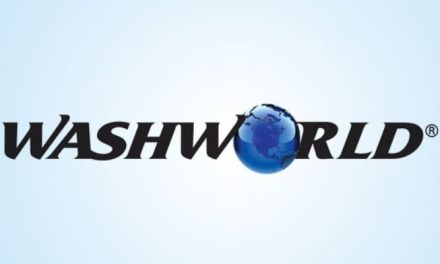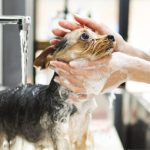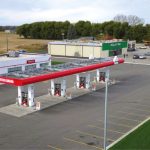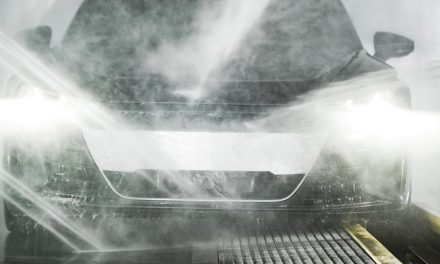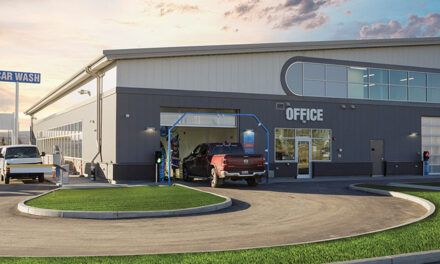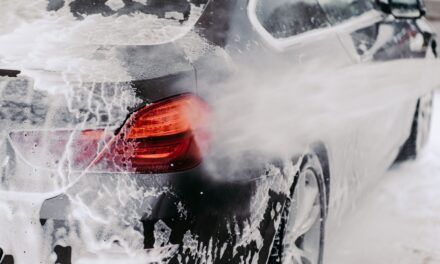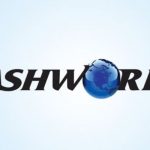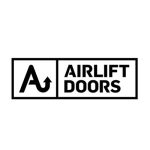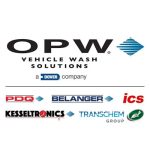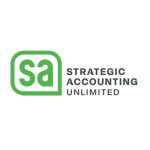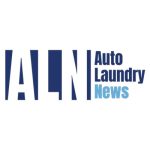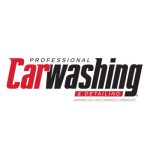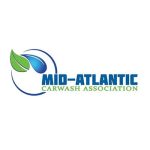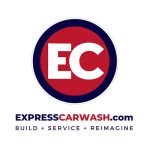
Car Wash Chemicals

Ready for winter washing?
Advancing technology – chemically speaking…
Winter weather means busier washes, and when better to be sure you are “chemically sound” for your customers? Are you using the right stuff? Are you using the right strength? What can and should you be learning about chemistry to ensure you are maximizing your customers experience at your carwash and protecting your business’ bottom-line?
At Convenience & Carwash Canada we decided to visit with the experts to help you understand a little more about what types of things car washers should be considering when it comes to making the right chemical decisions for their business. We spoke with one of the industry’s leading chemical manufactures about advancing technology in the industry and how operators can learn more about this important segment of their business.
We sat down with Doug Marquis, vice president of Business Development for CSI-Lustra Chemical, who has over 22 years of experience in the development, application, and marketing of cleaning and protection products in the professional carwash industry.
What types of products and technology are leading the way in carwash chemistry today?
By far, the protection products category has dominated the discussion over the last 10-12 years. Super-sealants, or total vehicle protectants, really kicked-off the craze which then moved into specialty waxes, carnauba products, and now even fast crashing polymer super-polishes. Virtually every mainstream supplier in the industry now offers a variety of higher performance specialty products for this category.
It’s amazing to see that we now have some of the brightest scientists in our industry studying the physical interaction of sealants on vehicles surfaces at a microscopic level to understand how to change to size and shape of a water droplet to make it run off the car better and faster.

Most chemical companies will provide products with hydrophobic properties designed to help break the surface tension of final rinse water to support the drying process.
Why is that?
Two core components; demand and technology really drove it. First, carwash operators have a continuous need to create ways to drive additional revenue, so they are hungry for “extra-service” product offerings. That demand, in part, then pushed the chemical suppliers to invest in technology to develop solutions that meet the needs of this growing and changing industry. As a result, we now have researchers with decades of advanced technology chemical formulation expertise working to design products that not only produce clean, dry, and shiny cars, but do so at a nano-technology level.
Additionally, there is of course the consumer demand. Consumers are spending more money to buy new vehicles today and therefore have an increased desire to keep them looking good and protect their investment. If you own a $50,000 SUV you want to make sure it still looks new when the time comes to sell it.

For the vast majority of the chemical applications, with much of today’s advanced car wash equipment, the amount of water needed is small enough that using fresh water is the best option.
Does every wash package use this technology?
Not necessarily the higher end protectants, but typically a lower cost drying agent or rinse aid. Most chemical companies will provide products with hydrophobic properties designed to help break the surface tension of final rinse water to support the drying process. The basic function of these products is similar to protectants in some ways, but the formulas are not designed to stay with the vehicle when it leaves. Typically, operators will use the higher end protectants as an upsell tool, included in the top couple of packages, to entice the consumer “buy up.” We want consumers to see it and smell it during application, see the shine afterwards, and watch how the water beads on their car the next time it rains.
Should chemistry be adjusted if using reclaimed water?
Reclaimed water is typically not best used as part of a chemical application, but rather it is used in a removal or underbody flush wash system. Even with the great advances in reclamation systems that we have seen throughout our industry, it is still very difficult to pencil out a ROI on using reclaimed water in a chemical application process.
How do operators get the information and chemical training they need?
First, operators should get involved with the different industry associations. The Canadian Carwash Association (CCA), International Carwash Association (ICA) and all the regional groups are constantly providing educational opportunities that help operators stay in touch with the latest developments. Second, networking within their peer group is always valuable. Get to know other carwash people and share ideas, talk about challenges, and be open with the information you have. Who better to learn from than other people with the same needs, goals, and ambitions as you? Finally, call us, the manufactures in the industry. Every quality carwash supply company has expertise and knowledge gained from working with hundreds or thousands of carwash operators.
Our job is to help operators solve problems, improve operations, and drive their businesses forward. Use the resources and experience we have gained from years of focus on creating value for our shared industry. We have chemical experts able to assess car washers’ individual needs and make recommendations for the right chemical line-up based on a real understanding of what each product’s capability is and how that matches up to the operator’s desired outcomes.
We all have different products to perform different duties, and we will help our customers to make well informed decisions on the options available to them. Ask your current supplier for training on what you are using.
So, there you have it. Technology is advancing rapidly as the carwash industry surges forward meeting the growing demands of today’s motoring public. The resources are available to you. Now go out and use them to become even better at what you do. Always remember, clean-dry-shiny keeps them coming back.

